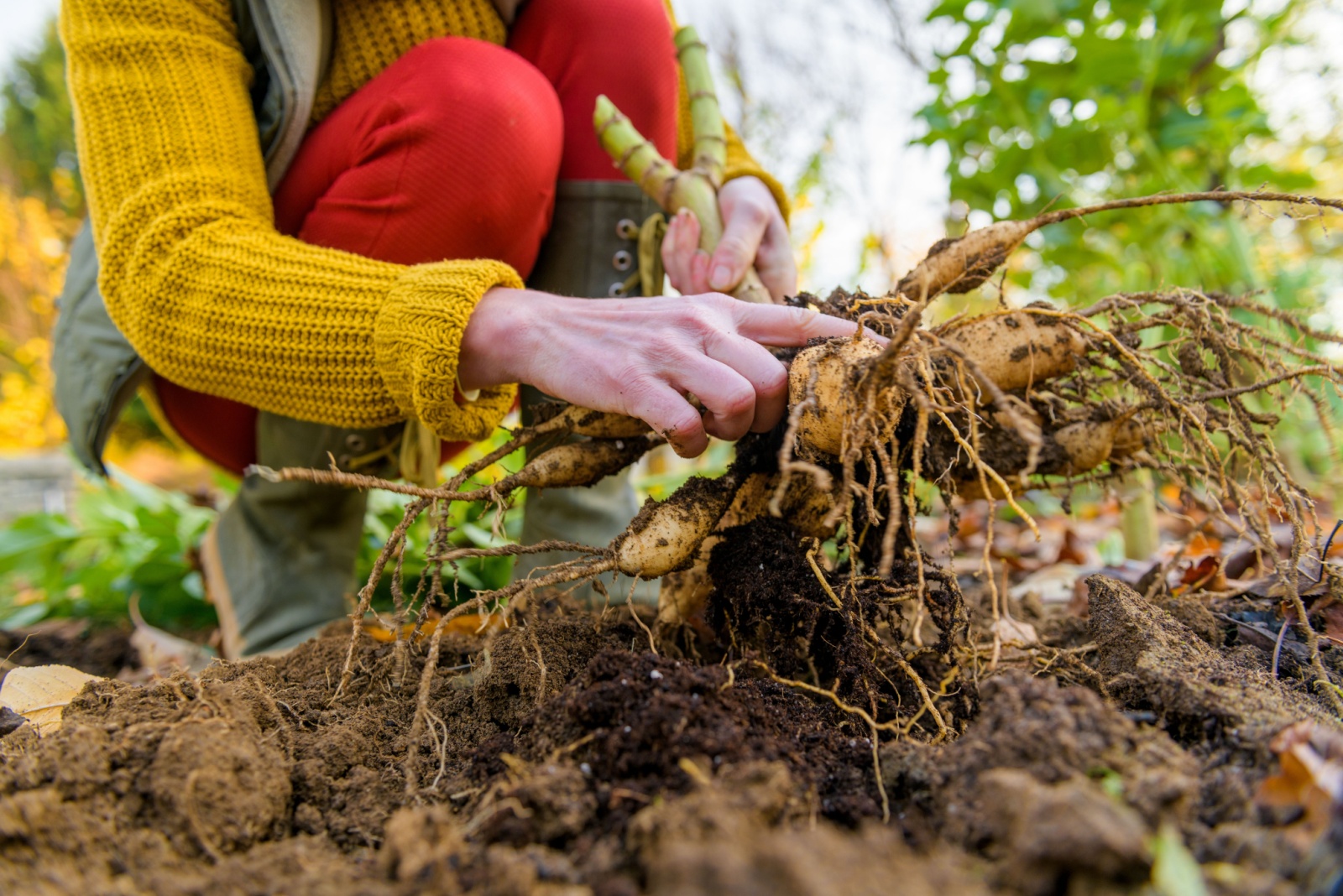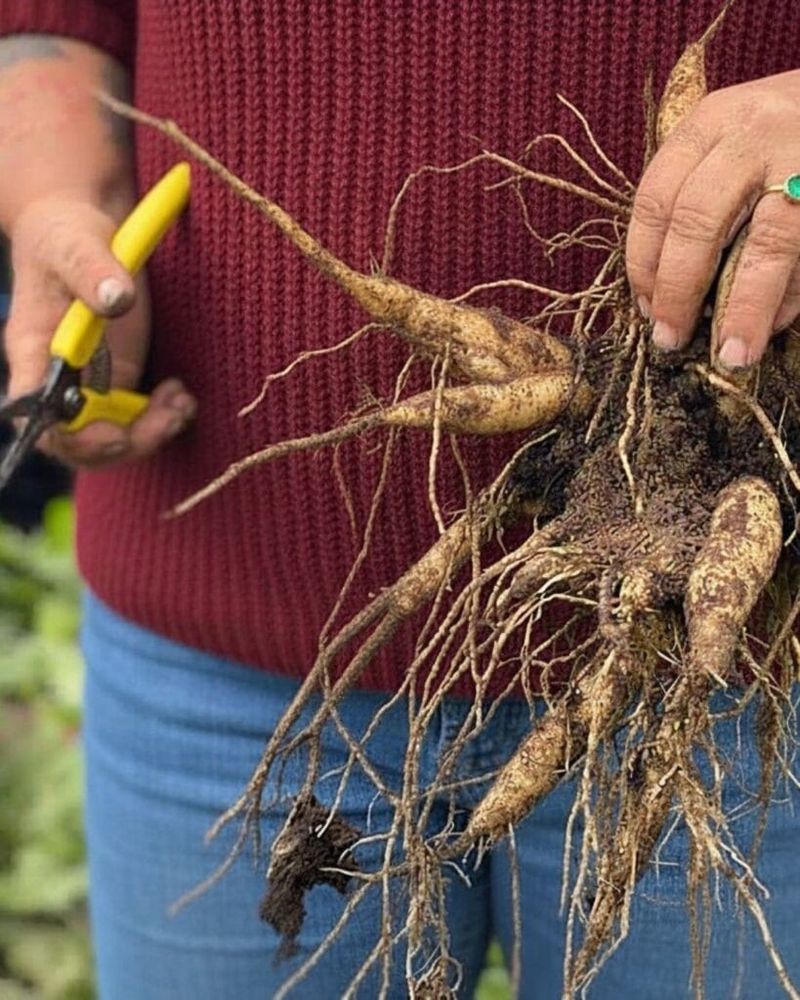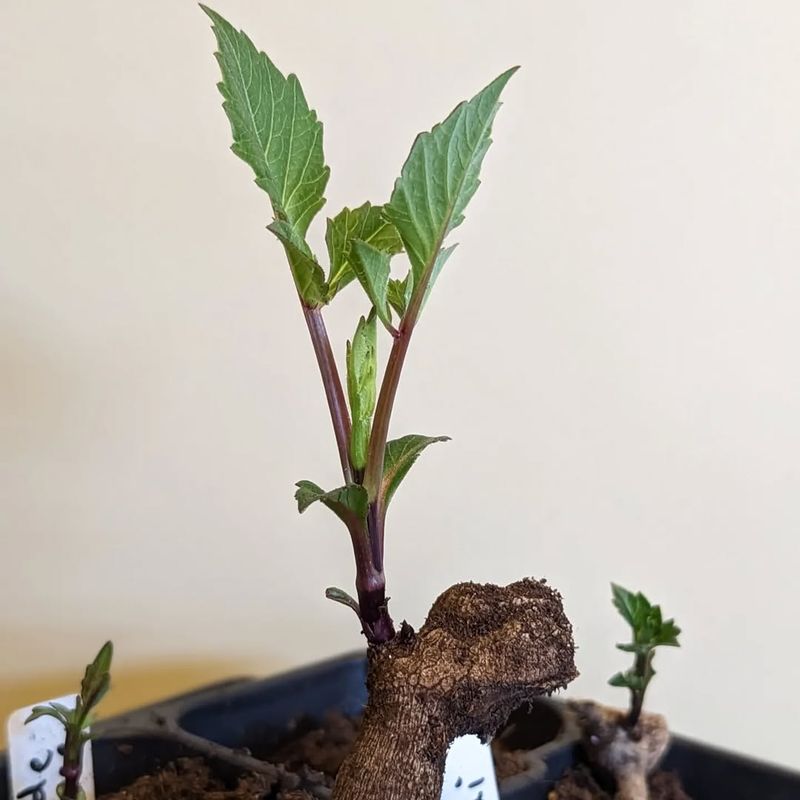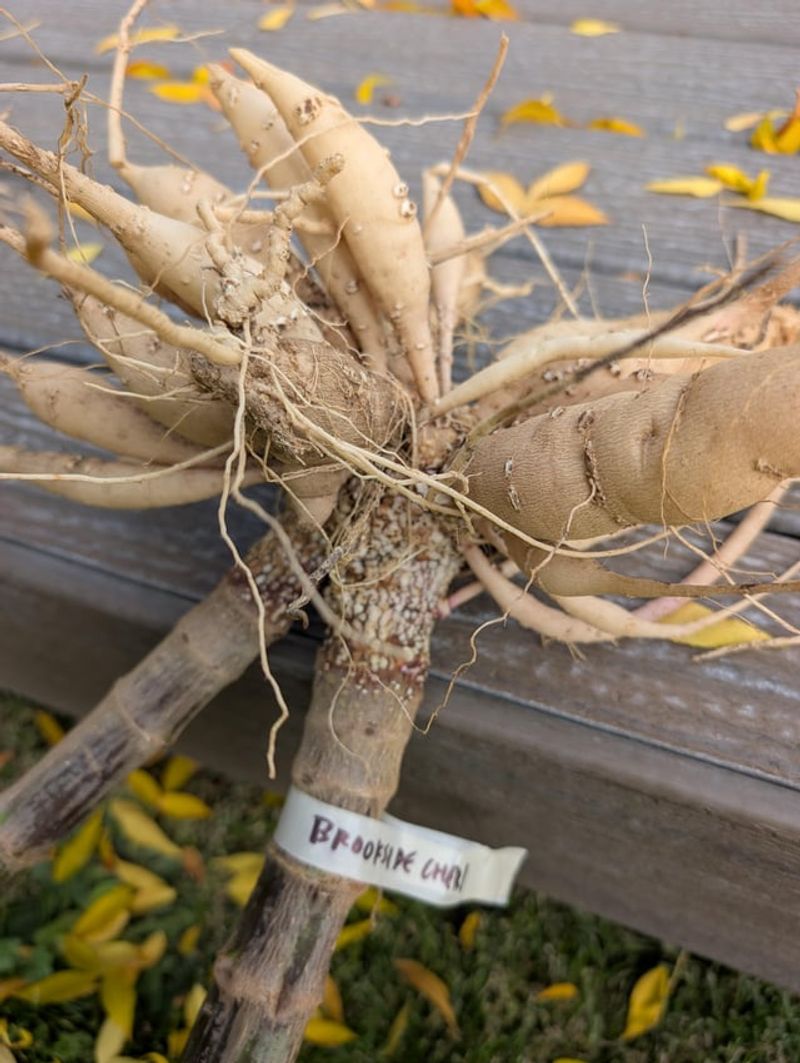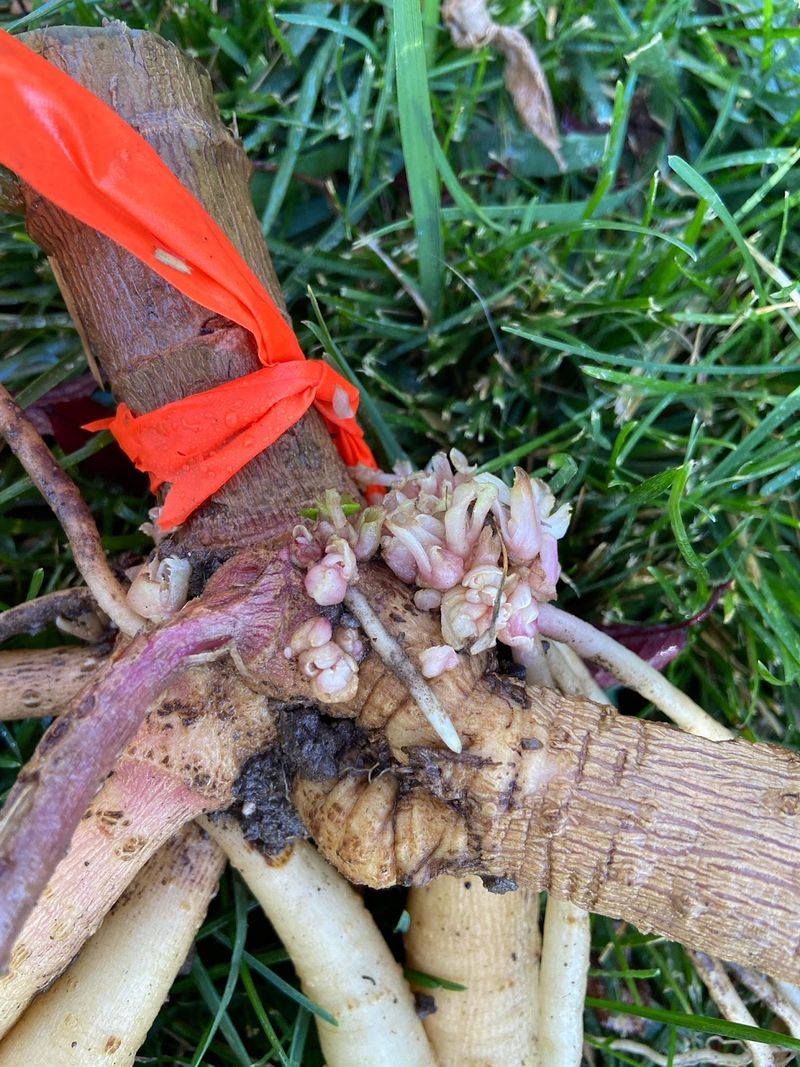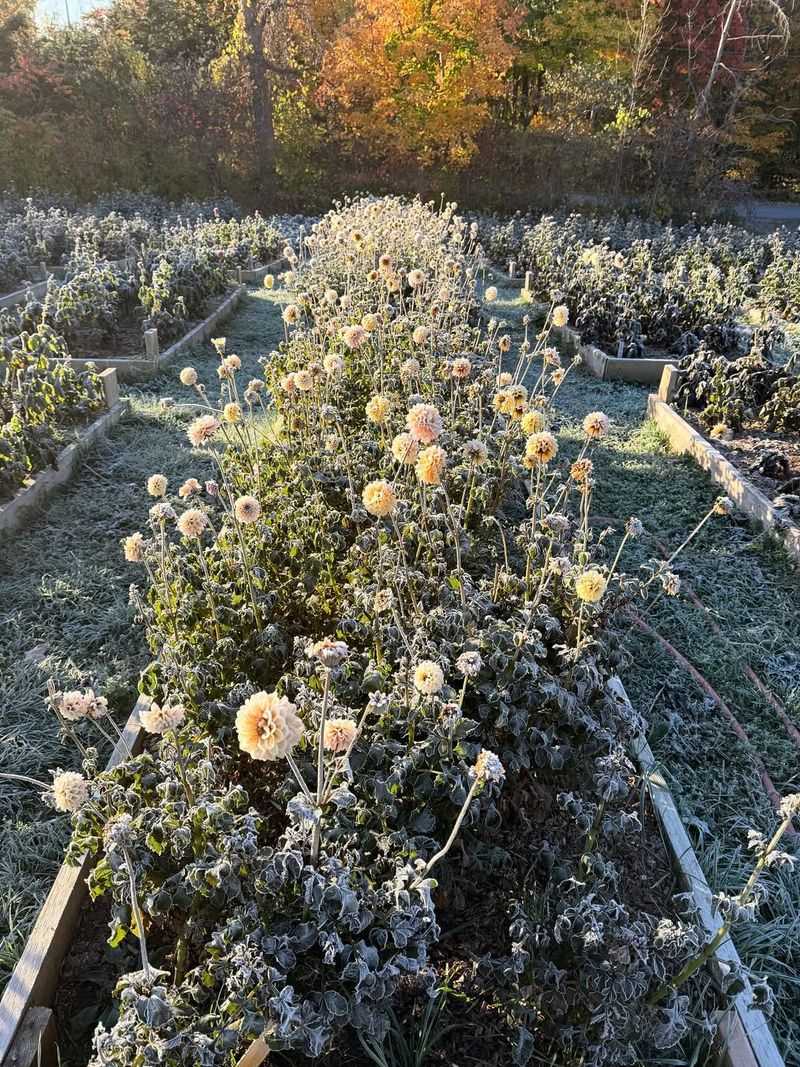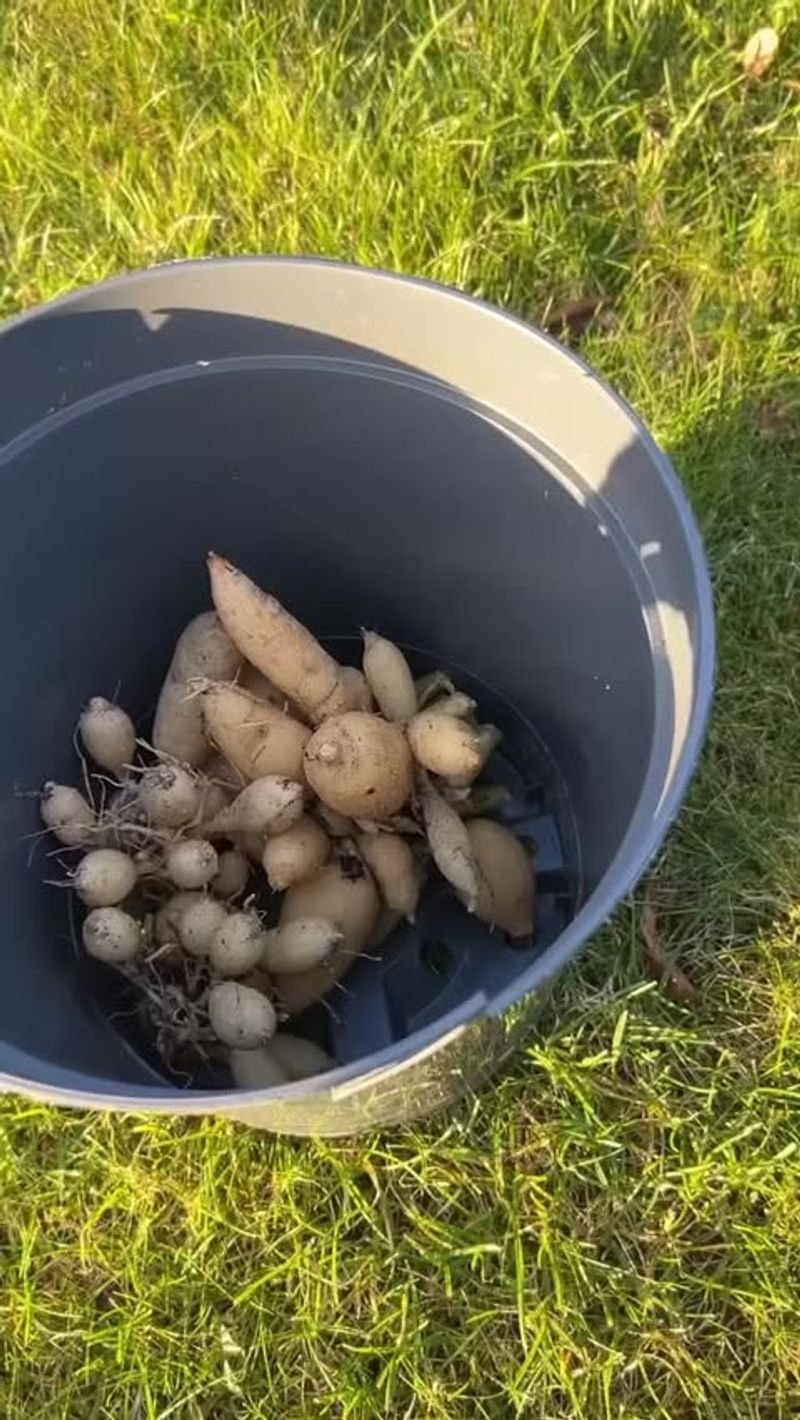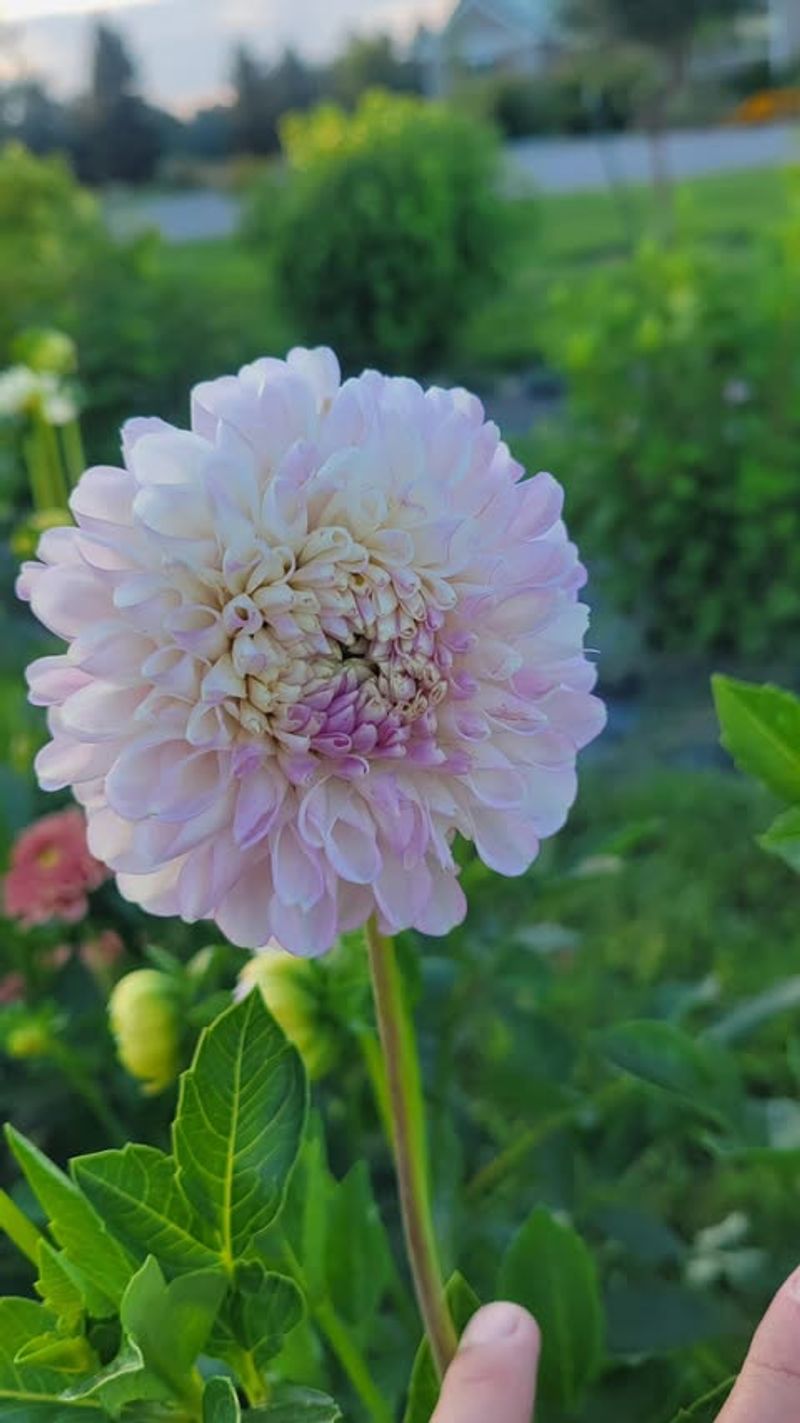Dahlias bring stunning color to Wisconsin gardens all summer long, but when fall arrives, these tender tubers face a serious threat. Cold winter temperatures in the state will kill dahlia tubers left in the ground.
Knowing when and how to dig them up properly can save your favorite varieties and ensure they bloom beautifully again next year.
1. Wait For The First Frost Signal
After the first light frost blackens your dahlia foliage, that’s your cue to start digging. Wisconsin gardeners typically see this happen anywhere from late September through October, depending on which part of the state you call home.
The frost damages the leaves but doesn’t immediately harm the tubers underground. Give it a few days after frost before you dig, allowing the plant to send energy back down to the roots for better winter storage and stronger growth next spring.
2. Cut Back The Stems Carefully
Once you’re ready to dig, use clean pruning shears to cut the stems down to about 4 to 6 inches above ground level. This makes the tubers much easier to handle and reduces the chance of breaking them during the digging process.
Leaving a short stem stub also helps you identify each clump later when you’re ready to divide or replant. Wisconsin’s shorter growing season means every tuber counts, so taking care during this step protects your investment and ensures healthy plants for the following year.
3. Dig Wide Around The Plant Base
Use a garden fork or spade to dig at least 12 inches away from the stem in all directions. Dahlia tubers spread out more than you might expect, and accidentally slicing through them can introduce rot or disease.
Work your way around the plant in a circle, loosening the soil gently before you attempt to lift. Wisconsin’s clay-heavy soils in some areas can make this trickier, so take your time and be patient to avoid damaging the delicate tuber necks where new growth emerges each spring.
4. Shake Off Excess Dirt Gently
After lifting the clump, shake or brush away loose soil so you can see the tubers clearly. Don’t wash them with water right away, as excess moisture can encourage mold and rot during storage. Let the tubers air dry for a few hours in a shaded spot outdoors or in a garage.
Wisconsin’s autumn weather can be unpredictable, so avoid leaving them outside overnight if rain or freezing temperatures are expected. Proper drying prevents many common storage problems and keeps your tubers healthy until spring planting time rolls around again.
5. Check For Damage And Disease
Inspect each tuber carefully for soft spots, cuts, or signs of rot before storing them away. Damaged tubers won’t survive the winter and can spread problems to healthy ones if stored together. Discard any that look questionable, even if it’s hard to let go of a favorite variety.
Wisconsin winters are long, and storage conditions can stress tubers, so starting with only the healthiest specimens gives you the best chance of success. Trim away any damaged sections with a clean knife if the rest of the tuber looks firm and healthy.
6. Cure Them Before Final Storage
Spread your tubers in a single layer in a cool, dry location for about a week to cure. This process toughens the skin and heals any minor cuts from digging, reducing the risk of rot during the long Wisconsin winter ahead.
A basement, garage, or shed works well as long as temperatures stay between 40 and 50 degrees. Avoid areas that freeze or get too warm and humid. Curing is often overlooked but makes a real difference in how many tubers survive until spring, so don’t skip this important step in the process.
7. Store In Proper Containers With Medium
Pack cured tubers in boxes or crates filled with slightly damp peat moss, vermiculite, or sawdust. The medium should feel barely moist, not wet, to prevent both shriveling and rotting during storage. Label each container with the variety name if you’re storing multiple types.
Wisconsin basements usually provide ideal storage temperatures, but check on your tubers monthly throughout winter. If they start to shrivel, lightly mist the storage medium. If you spot mold, remove affected tubers immediately to protect the rest of your collection from spreading contamination.
8. Plan Your Spring Planting Timeline
Mark your calendar to bring tubers out of storage about two weeks before Wisconsin’s last expected frost date, usually in mid to late May. This gives them time to wake up and develop small sprouts before going into the ground.
Inspect them again at this point, discarding any that didn’t make it through winter. Divide large clumps carefully, making sure each division has at least one eye where new growth will emerge. Starting with well-rested, properly stored tubers gives you a head start on another gorgeous dahlia season in your Wisconsin garden.

